
Tuesday March 28, 2023
By Trevor Ross
 Education
Education
Edibles account for a growing share of the cannabis market and have become a popular consumption method for new consumers. In fact, in 2021, the growth of the edibles market outpaced the growth of the cannabis market as a whole. But with the explosive growth of cannabis edibles have come a cornucopia of product types and infusion methods which may be confusing to some consumers.
This article reviews the various kinds of edible cannabis products and infusion methods, and offers tips for safely dosing your own edibles at home.
Product Types
Solids

Solids comprise most of the edibles available including gummies, chocolates, baked goods, and much more. These foods are typically cooked with cannabis-infused oil, butter, or distillate, and can be cooked at home nearly as easily as any other recipe. Solid edibles take 45 mins to 2 hours to present effects, and can be expected to last 4-6 hours (peaking within the first 2).
Drinks
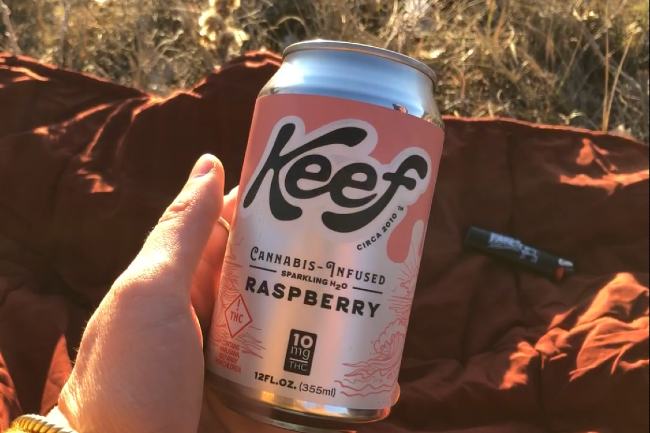
Many cannabis-infused drinks take the form of sodas, the only drawback to which is the sugar content, which may add a sugar high (and a sugar crash) to your cannabis high. But relaxing teas are also available in most adult-use markets, and are perfect for evening consumption, and sparkling water options are becoming more common as well.. Cannabis drinks can take effect faster than solid edibles, even as fast as 15 minutes on an empty stomach.
Dissolvables

Dissolvable THC tablets or powders are a relatively new addition to the menu that can be added to drinks or placed directly under the tongue. Though THC is not water-soluble, it can be infused into watery drinks using nanoemulsion. By this process, the THC does not actually mix with the water, but remains suspended in microscopic bubbles like boba pearls. The effects of some drinks prepared this way can be felt in as few as 15 minutes.
Tincutres
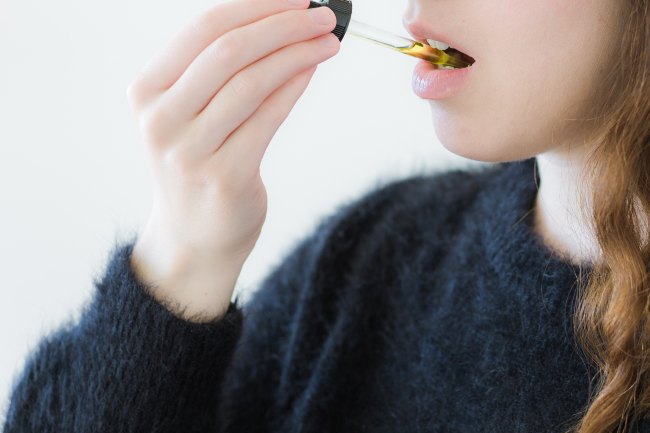
Tinctures are oils or alcohol infused with THC that are absorbed under the tongue or generally through oral tissue. Effects present after about 20-45 minutes. Tinctures are great when you want a little THC without eating or drinking anything, such as before bed. Tinctures also have the longest shelf-life of any option on this list, making them ideal for infrequent consumers — just take it off the shelf and apply a few drops under the tongue without worrying your supply’s gone bad.
Sprays
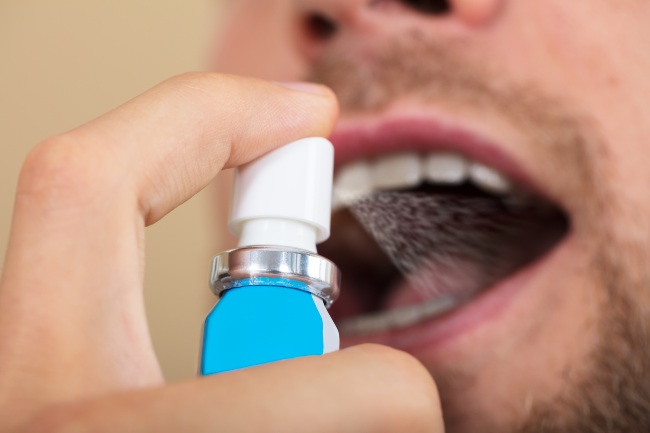
A close cousin to tinctures, oral cannabinoid sprays offer similar relief with faster and easier application. Sprays are impossible to spill and can be used more discreetly than lifting a dropper over your mouth. Like tinctures, they present effects in about 30 minutes, and some claim to offer12 hours of relief.
Inhalers

In the last few years, cannabinoid inhalers began an appearance in both adult-use and medicinal markets. Similar to oral sprays, these inhalers offer a quick, measured dose. But unlike oral sprays, these products are inhaled like smoke or vapor, meaning they enter the bloodstream directly from the lungs for almost instant effects.
Infusion Methods
Oil
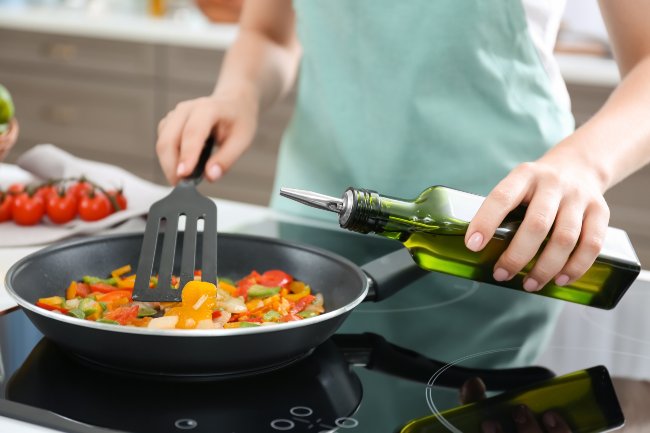
THC is not water-soluble like sugar, but rather fat-soluble like vitamins A and E, meaning it binds to lipids, or fat. This is why many solid edibles are cooked with infused oils including olive oil, canola oil, nut oils, and it binds particularly well with coconut oil. These oils are typically infused by mixing ground cannabis into the oil and simmering it over heat. The heat breaks the bond of the THC from the plant matter and it then binds to the fat in the oil. Once these oils are infused with cannabinoids, they are folded into the recipe like any other. Cannabis oils are also used in topicals like balms and lotions.
Butter

Because cannabinoids bind to fat, they are also commonly infused into butter. This is achieved similarly to oil whereby the butter is mixed with cannabis flower and heated (such as over a double boiler) until the cannabinoids have transferred from the flower into the butter. This same principle can also be applied to milk and cream.
Distillate

THC distillate is the near-pure oil extracted from cannabis plants using solvents and specialized machinery, and the result is an oil similar to the content that fills vape cartridges. Potency of this product can reach near 100% THC, but sometimes at the expense of terpenes, flavonoids, and lesser cannabinoids. Distillate cannot — and should not — be made at home, but once acquired, it can be drizzled over any food to make it a cannabis edible. Distillate is perfect for people who like edibles but don’t like cooking.
Tips for Dosing Edibles
Some edibles and infusion methods differ in how long they will take to present effects, but they will all take longer than smoking or vaping. THC that is ingested, even in liquids, must travel through the digestive tract and eventually the liver where that THC is metabolized into 11-hydroxy-THC, which then released into the bloodstream (as opposed to going directly from the lungs into the blood).
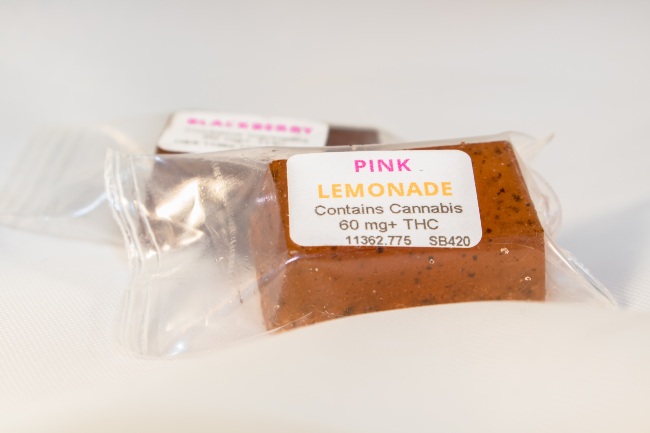
The risk associated with this consumption method is that while smokers can feel they’ve had enough and stop smoking, people using edibles have no way of consuming less once it’s down the hatch. Eating too much THC is not a medical emergency, but it will scuttle any other plans you had for the day. Here are a few tips for dosing your edibles.
Let’s pretend we’re cooking brownies and have an eighth of weed that’s 20% potency. First, we translate the percentage of THC in the flower into weight per gram by multiplying it by 1,000. So a strain that is 20% THC x 1,000 = 200mg of THC per gram of weed.
Then we’ll multiply that gram by how much weed we have. An eighth is 3.5 grams, so 200mg x 3.5 = 700mg of THC total.
If we are going to cut a tray of brownies into 20 pieces, then 700mg THC divided over 20 brownies = 35mg THC per brownie.
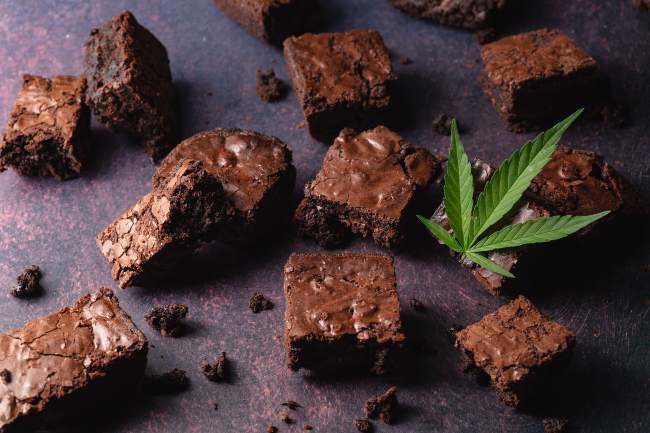
The industry standard is 10mg per serving, so we just baked some seriously potent brownies, but those numbers can be lowered by using less butter/oil, less weed, or a less potent weed. But the equation remains the same: calculate the weight of THC and divide by total pieces or bites to determine how much THC will be in each piece.
What’s your favorite type of edible and why? Comment below!
Frequently Asked Questions
What are the different types of cannabis gummies?
Gummies are one particular kind of cannabis edible, albeit the most popular option comprising about 60% of edibles sales. Some have only THC, while others offer THC-CBD blends. Cannabis gummies intended as sleep aids also often contain CBN.
What are the different types of cannabis infused products?
Cannabis-infused edibles can be solids, drinks, dissolvables tablets, tinctures, or oral sprays. Tinctures and sprays present effects a little quicker than other edibles.
How do I choose between edibles?
Some consumers choose based on activation time, while other choose based on flavor. Solids like gummies and cookies take 1-2 hours to show effects, while liquids, tinctures and sprays can take as few as 15 minutes. Flavor is difficult to attest to without just trying the product.
What are the most common edibles?
Gummies are the most popular cannabis edibles, accounting for about 60% of edibles sales.






